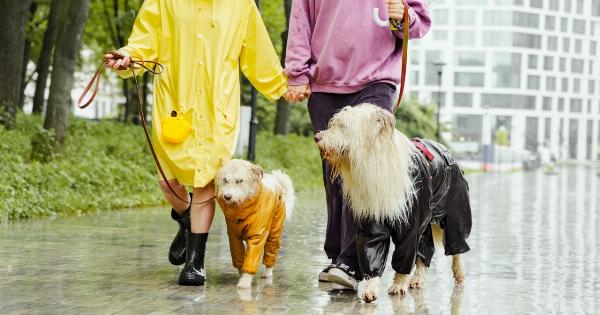Squirrels are small rodents commonly found in various parts of the world. Known for their acrobatics and fluffy tails, squirrels are often seen as harmless creatures. However, they can actually pose several health risks, especially during certain seasons.
In this article, we will explore the different seasons of squirrels and the health risks they may bring.
Spring: Breeding Season and Nesting Habits
In spring, squirrels enter the breeding season, searching for mates and establishing territories. This increased activity can lead to more interactions with humans, potentially resulting in bites or scratches.
Squirrels may also invade attics or crawl spaces to build nests, causing damage to property and increasing the risk of diseases.
Summer: Foraging and Food Contamination
During the summer, squirrels are actively foraging for food to build up their fat reserves for the winter. While they primarily feed on nuts, seeds, fruits, and insects, they may also scavenge for human food waste.
This behavior can lead to the contamination of food sources, increasing the risk of foodborne illnesses.
Fall: Nut Hoarding and Property Damage
Fall is the season when squirrels prepare for winter by hoarding nuts and seeds. They may bury their food caches in lawns or gardens, but they can also store them in attics, wall voids, or other hidden places within human dwellings.
This behavior can result in property damage and attract other pests like insects or rodents.
Winter: Indoor Infestations and Electrical Risks
During the winter, squirrels seek shelter in warmer places, including homes, sheds, or garages. Once inside, they can cause significant damage by chewing on insulation, wires, or wooden structures.
This behavior not only leads to costly repairs but also increases the risk of electrical fires.
Health Risks Associated with Squirrels
Squirrels can carry various diseases and parasites, posing potential health risks to humans. Here are some of the most common health concerns related to squirrels:.
1. Rabies
Rabies is a viral disease that affects the central nervous system of mammals. Squirrels are among the animals that can carry and transmit rabies.
While squirrel-to-human transmission is rare, it is important to avoid contact with any wild or unfamiliar animals, including squirrels, to reduce the risk of exposure.
2. Lyme Disease
Squirrels are known carriers of ticks, which can transmit Lyme disease to humans. These tiny, blood-sucking parasites can latch onto squirrels and later attach themselves to humans, potentially transmitting the bacteria responsible for Lyme disease.
It is crucial to take precautions when spending time in areas where squirrels and ticks are prevalent.
3. Fleas and Mites
Just like other rodents, squirrels may carry fleas and mites. Fleas can bite humans and cause itchy skin irritations, while mites can cause mange in both squirrels and humans.
It is important to keep living spaces clean and take preventive measures to avoid flea or mite infestations.
4. Salmonella and E. coli
Squirrels can contaminate food sources with Salmonella and E. coli bacteria through their droppings.
If humans come into contact with these bacteria through consumption of contaminated food or contact with contaminated surfaces, it can lead to gastrointestinal illnesses.
5. Allergies
Some individuals may experience allergies to squirrel dander or their droppings. Breathing in these allergens can trigger allergic reactions, including sneezing, coughing, watery eyes, and respiratory discomfort.
Proper personal protection should be used when dealing with areas heavily inhabited by squirrels.
Prevention and Safety Measures
To minimize the health risks associated with squirrels, it is important to implement the following preventive measures:.
1. Seal Entry Points
Inspect and seal any potential entry points in your home, such as gaps, cracks, or openings. This helps to keep squirrels and other wildlife from gaining access to your living space.
2. Secure Attics and Crawl Spaces
Ensure that attics and crawl spaces are properly secured to prevent squirrels from nesting indoors. Use sturdy materials to repair any damages and consider installing wire mesh or screens over vents and openings.
3. Keep Trash and Food Secure
Store trash in secure containers with tight-fitting lids to prevent attracting squirrels and other animals. Likewise, secure your food sources and avoid leaving pet food outside for extended periods of time.
4. Trim Tree Branches
Trim tree branches that are close to your house, as squirrels can use them as a bridge to gain access to your property. Keep tree limbs at least 6 feet away from your roofline or power lines.
5. Practice Proper Garden Maintenance
Regularly clean up fallen fruits, nuts, and seeds from your garden to reduce the attraction for squirrels. Consider using squirrel-proof bird feeders if you enjoy feeding birds.
Conclusion
Squirrels may seem harmless and cute, but they can pose several health risks, particularly during certain seasons.
From the potential transmission of diseases like rabies and Lyme disease to property damage and food contamination, it is essential to be aware of these risks and take preventive measures. By implementing the suggested precautions, we can coexist with squirrels without compromising our health and well-being.






























